A uniform, one-size-fits-all approach to go-to-market strategies is simply non-existent. However, the need for a structured methodology becomes apparent in the dynamic landscape of business operations, where the pursuit of a customer-centric go-to-market strategy becomes a high-priority.

A successful go-to-market strategy is one that is supported by a comprehensive framework for decision-making, enabling the evaluation of several go-to-market options and the selection of the most viable ones tailored to specific needs. To achieve the desired outcomes, a sequence of pivotal decisions needs to cascade across three strategic tiers: market, buyers, and customer engagement.
Within the market strategy layer, business leaders are provided with guidance on how to navigate decisions regarding market segmentation and optimal avenues for market entry. It falls upon senior leadership teams to identify which market segments warrant consideration, establish priorities among these segments, and ascertain the most efficient pathways to access these markets. This task has its challenges, particularly when diverse viewpoints are prevalent across the spheres of sales, marketing, and product leadership. Ultimately, prioritazing customer segments and efforts is one of the most important parts of a go-to-market strategy that should always be customer-centric to some degre.
According to a survey conducted by McKinsey & Company, companies that have a well-defined and effectively executed go-to-market strategy are 30% more likely to achieve above-average revenue growth compared to those without a clear strategy in place. This highlights the significant impact that a thoughtfully designed and executed go-to-market strategy can have on a company's overall business performance.
In this blog post we try to provide some tips on how to develop an insights-driven and harmonized go-to-market strategy. But first, let's explore what a go-to-market strategy is.
What is a go-to-market strategy?
A go-to-market strategy, often abbreviated as GTM strategy, is an all-encompassing business plan to introduce a new product or service to the market, attract customers, and ultimately generate revenue. This strategic approach is designed to mitigate the inherent uncertainties that come with launching something new.
A typical GTM strategy considers customer segments and the target audience, a meticulously crafted marketing blueprint and a well-defined sales and distribution roadmap. It encompasses various aspects of marketing, sales, distribution, and customer engagement to effectively launch and promote the offering.
Key components of a go-to-market strategy often include:
-
Target Audience: Identifying the specific customer segments or industries that the product or service is intended for.
-
Value Proposition: Clearly articulating the unique value and benefits that the product or service offers to customers. This helps differentiate it from competitors.
-
Messaging and Positioning: Creating compelling messaging and positioning that resonates with the target audience and communicates the solution's value in a way that is easy to understand.
-
Distribution Channels: Determining the most effective channels through which the product or service will be delivered to customers. This could include direct sales, partnerships, online platforms, or distribution networks.
-
Pricing Strategy: Setting the pricing structure for the product or service, considering factors such as production costs, market demand, and perceived value.
-
Sales and Marketing Tactics: Outlining the specific sales and marketing activities that will be used to reach the target audience. This might involve digital marketing, advertising, trade shows, content creation, and more.
-
Sales Enablement: Providing the sales team with the necessary tools, resources, and training to effectively communicate the value proposition and convert leads into customers.
-
Launch Plan: Planning the official launch of the product or service, including timing, promotional activities, and any events or announcements.
-
Metrics and KPIs: Defining key performance indicators (KPIs) that will be used to measure the success of the go-to-market strategy, such as sales growth, customer acquisition cost, and market share.
-
Feedback Loop: Incorporating a mechanism for collecting and analyzing customer feedback and market trends to continuously refine and improve the go-to-market approach.
A well-executed go-to-market strategy should help companies optimize their efforts, minimize risks, and increase the likelihood of a successful product or service launch. It ensures that the right message reaches the right audience through the right channels, resulting in increased customer adoption and revenue generation.
The 3 steps of a successfull go-to-market strategy
Step 1: Choose the Right Customer Segments
Collaborative efforts among leaders are essential for pinpointing the suitable market segments that align with the business's objectives. Employing conventional methods like macrosegmentation, encompassing factors such as geography and firmographics, aids in broadly categorizing segments.
If a more refined approach is needed to engage a specific audience more effectively, microsegmentation techniques might be required. These could involve aspects like technographics, psychographics, or sociographics.
Step 2: Prioritize Customer Segments with Optimal Success Potential
At any given circumstance, certain market segments naturally hold greater allure than others. For business leaders, a data-driven methodology is imperative to discern which segments need prioritization. By eliminating subjective opinions and biases, the focus shifts toward identifying the most promising and appealing segments that align with the business's goals. This approach is instrumental as it empowers go-to-market execution teams to operate with the necessary precision and effectiveness.
Step 3: Map Out Optimal Market Entry Pathways
In initial strategy discussions, executives often fail to give due attention to decisions concerning routes to market. This aspect holds immense significance within the GTM strategy, especially considering that a combination of routes is typically essential to meet the expectations of buyers. .
However, there are many different ways to reach certain groups of customers, such as using online stores, middlemen who sell your product, and websites for buying and selling. Finding the best mix of ways to directly sell and indirectly sell your product depends on knowing your intended customers really well.
Neglecting these steps can have dire consequences for business leaders. Revenue teams find themselves inundated, striving to engage a broad spectrum of entities. Resources, encompassing both personnel and budgets, become thinly stretched, leading to the unfortunate shortfall of revenue targets. The reality is that pursuing a larger array of markets and opportunities doesn't necessarily correlate with heightened growth.
Business leaders must embark on a path of focus and prioritization, ensuring the ideal market segments and routes to market are meticulously addressed as the foundational stages of their go-to-market strategy.
Conclusion
Developing a successful go-to-market strategy requires careful consideration of the target audience, value proposition, distribution channels, pricing strategy, and sales and marketing tactics. By choosing the right customer segments, prioritizing those with optimal success potential, and mapping out optimal market entry pathways, B2B organizations can optimize their efforts and increase the likelihood of a successful product or service launch.
It is crucial for business leaders to focus and prioritize their efforts to ensure the ideal market segments and routes to market are addressed.



